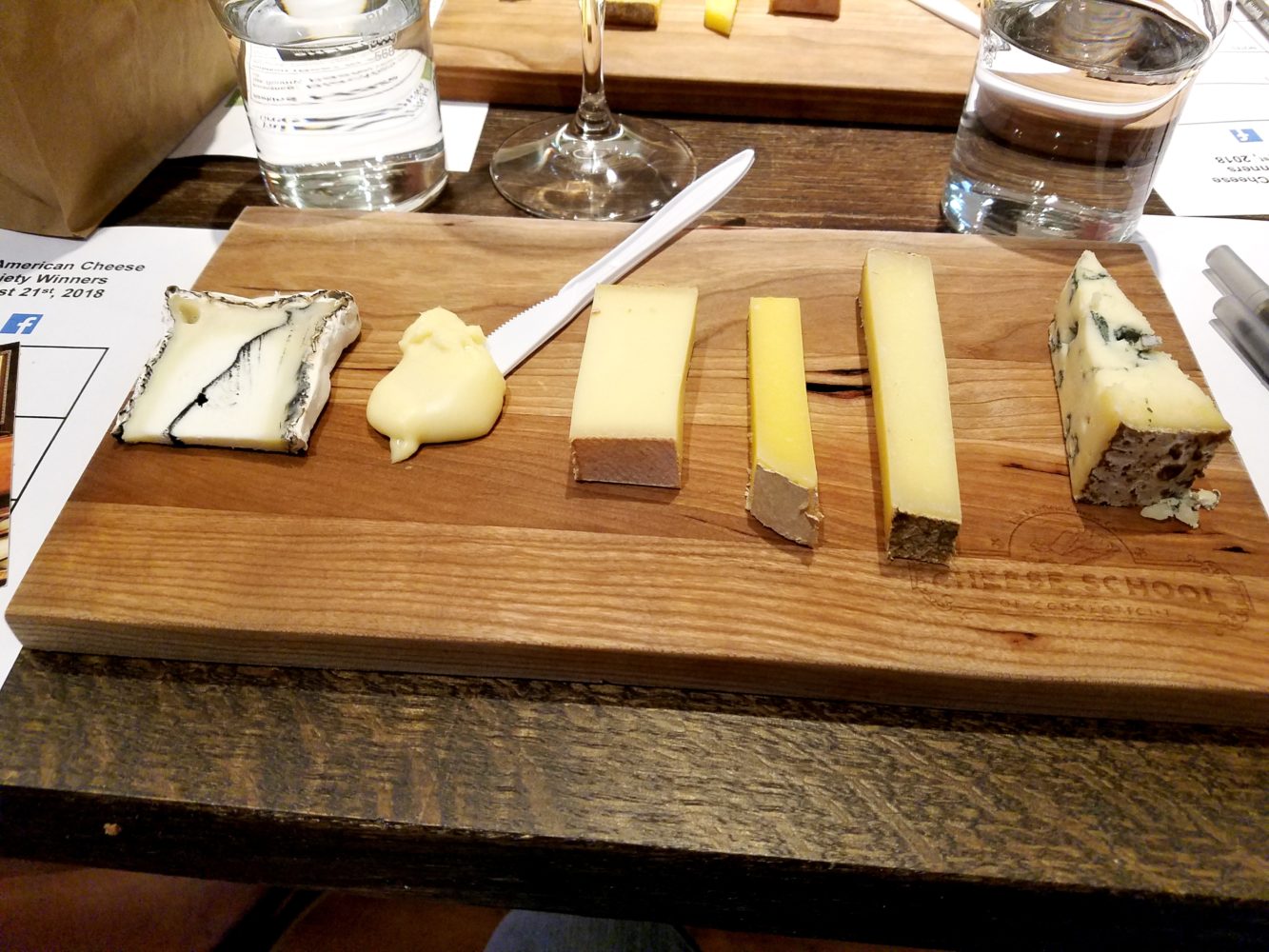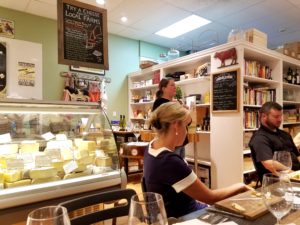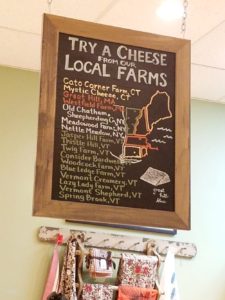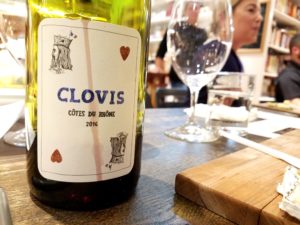In addition to wine, I also love cheese which is lucky for me because I live near a cheese shop that actually hosts classes.
On August 21, 2018 I attended a class at Fairfield Cheese where I got to sample winning cheeses from the 2018 American Cheese Society’s cheese competition.
I registered for the class online which costs $53 for the two-hour tasting.
Above is the cheese board that greeted me once I arrived and took my seat.
The cheese board included five first-place-winning cheeses and one second-place-winning cheese.
We were guided through the tasting by the co-owner of the cheese shop, Laura Downey.
The thing that first struck me about the world of competitive cheese is the number of categories (37-pages long) that exist for producers to compete in.
For example, the second-place-winning cheese we tasted won in the category of, “Washed Rind Cheeses aged more than 60 days – up to 42% moisture – cow’s milk.”
Now that’s specific!
With categories this specific, you know these producers take their craft seriously.
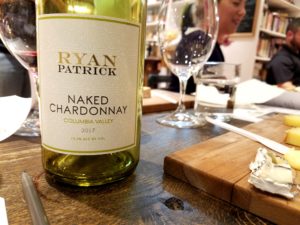
Photo Credit: Wine Casual, A 2017 unoaked chardonnay by Ryan Patrick produced in Columbia Valley, Washington.
The American Cheese Society was founded at Cornell University in 1983.
This year their annual cheese competition was held in Philadelphia and was attended by cheesemakers, distributors, academics, microbiologists and general enthusiasts.
While most of the cheese entries hail from producers in the United States, the competition also attracts entries from Canada and South America.
In our class, we tasted through each of the cheeses and talked about what made each cheese special.
Our glasses were constantly filled with two wines that were available to taste over the evening.
The first wine was a 2017 unoaked chardonnay by Ryan Patrick produced in Columbia Valley in Washington state.
The second wine was a 2016 Côtes du Rhône by Clovis in France.
I enjoyed the evening and look forward to attending another class when I have a chance.
Below are notes on the six cheeses ordered from left to right on the cheese board that I tasted over the course of the evening.
A Sampling of American Cheese Society Winners 2018
Cheese 1
Hawkins Haze
Prize: 1st Place – Soft-Ripened Cheeses – made from sheep’s milk
Location: Blackberry Farm, Tennessee
Type: Bloomy, pasteurized sheep’s milk
Tasting Note: The dark notes in the cheese are made by ash (i.e., not blue cheese). Ash makes the cheese more conducive to attracting mold. This is a popular cheese-making tradition in the Loire Valley in France which produces lots of briny cheeses from sheep’s milk.
Cheese 2
Harbison
Prize: 1st Place – Soft-Ripened Cheeses – made from cow’s milk
Location: Jasper Hill Farm, Vermont
Type: Bloomy, pasteurized cow’s milk
Tasting Note: This cheese is creamy with a moldy rind. It is polite but not memorable.
Cheese 3
Reading
Prize: 1st Place – Raclette-style – Aged over 45 days – all milks
Location: Spring Brook Farm, Vermont
Type: Semi-soft, raw, cow’s milk
Tasting Note: This cheese is yeasty with creamy yellow milk that has a funky twist.
Cheese 4
Pleasant Ridge Reserve
Prize: 2nd Place – Washed Rind Cheeses Aged more than 60 days – up to 42% moisture – cow’s milk
Location: Upland’s Cheese, Wisconsin
Type: Firm, raw cow’s milk
Tasting Note: This cheese is fashioned to resemble Alpine cheeses.
Cheese 5
Calderwood
Prize: 1st Place – Cheese with added flavor ingredients rubbed or applied on the exterior surface of the cheese only – all milks
Location: Jasper Hill Farm, Vermont
Type: Firm, raw cow’s milk
Tasting Note: This semi-hard cheese is aged in hay and is Alpine reminiscent.
Cheese 6
Bayley Hazen Blue
Prize: 1st Place – Blue-veined with a rind or external coating – made from cow’s milk
Location: Jasper Hill Farm, Vermont
Type: Blue, raw cow’s milk
Tasting Note: This cheese is blue-cheese light with more restraint than your typical, pungent blue cheese.
